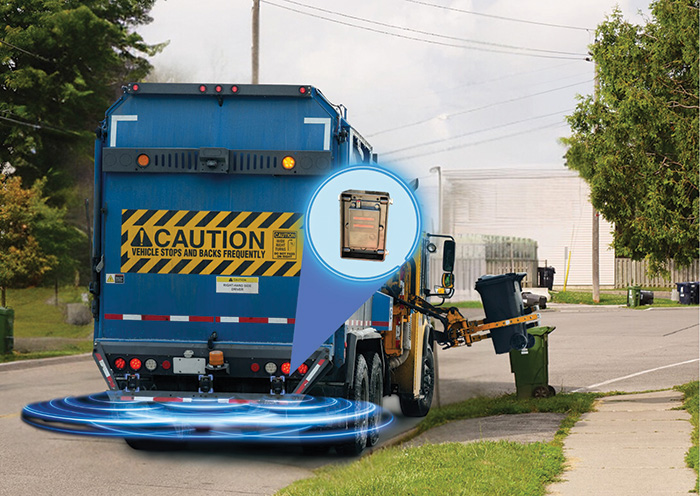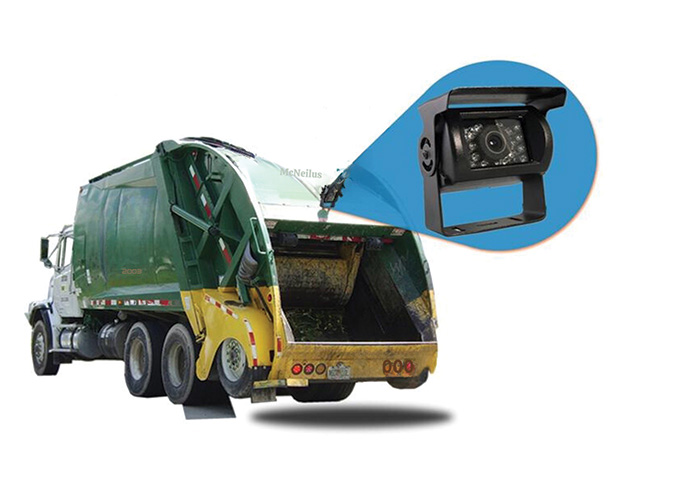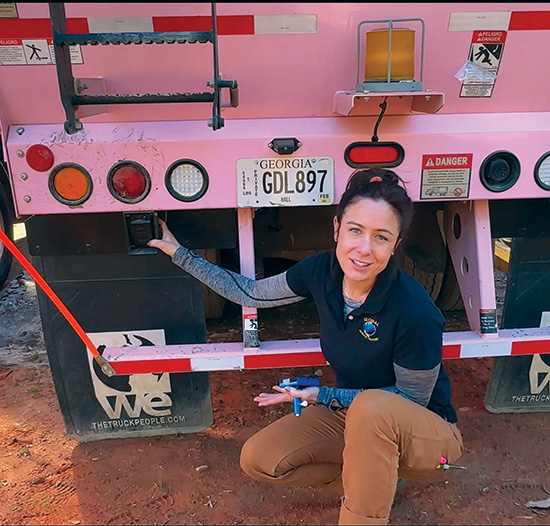By prioritizing safety and embracing innovative technologies like Automatic Reverse Braking Systems, haulers and recyclers can lead the way towards a safer, more efficient future for the waste management industry.
From the clatter of urban streets to the quiet of suburban neighborhoods, solid waste vehicles navigate through a myriad of obstacles daily. However, the risks inherent in these operations have long been a concern, with accidents and collisions posing threats not only to property but also, more critically, to human lives. In response to these challenges, the integration of fleet safety technology systems emerges as a beacon of hope, which will drastically reduce accidents, save lives, and optimize the efficiency of waste management operations.
In this article, we explore the transformative potential of Automatic Reverse Braking Systems in waste fleet management along with best practices that haulers can apply to their fleets. This article highlights decades of collective experience in safety technology from industry leaders and presents real data from waste management companies that have incorporated this safety system into their fleets.

Photos courtesy of Global Sensor Systems.

Taken from: www.tadibrothers.com/products/garbage-truck-backup-camera-7-monitor-with-ccd-mounted-box-camera
Safety Cameras Vs. Automatic Braking Systems
Safety is one of the top concerns for any waste management company, and accidents during fleet operations can be catastrophic for everyone involved. Waste management companies are now being mandated to invest in safety solutions, such as camera systems, to help with mitigating safety risks, and keep drivers alert while on their routes.
Camera systems are passive safety systems as they are designed to protect occupants and pedestrians during a crash, and do not require any action from the driver or passengers to function; they activate automatically in the event of a crash. However, they do not prevent a crash from happening.
Automatic Braking Systems are active safety systems, which on the other hand, are designed to prevent accidents from occurring in the first place. They are “active” because they are continuously operating while the vehicle is in motion, actively assisting the driver in avoiding potential hazards.
In the dynamic world of waste management, where safety and efficiency are paramount, the industry is continually evolving. One of the most promising advancements in this space is the integration of Automatic Reverse Braking Systems (ARBS) into waste fleets. Let’s delve into the transformative potential of ARBS that haulers and recyclers can apply to their fleets to keep their teams and communities safe.
Key Insights from Using Active Safety Systems and ARBS
ARBS are now being adopted by leading waste management firms across North America to offer a more robust solution to backing accidents, in addition to cameras and other safety solutions. For instance, in an independent study done by a leading waste disposal company in Canada, since implementing Automatic Reverse Braking Systems in the last two years, have had zero backing accidents. The investment to prevent accidents is vital. We encourage others in the industry to follow their lead in making your business, as well as our communities, safer for everyone.
The benefits of ARBS also extend beyond just safety alone. By optimizing braking performance and minimizing downtime, these systems can significantly enhance operational efficiency and productivity for any commercial fleet. Solid waste companies who use ARBS have benefitted by reducing insurance costs as well. Adopting ARBS marks a significant change in waste fleet management practices. This shift is especially noticeable in the evolving safety culture around reversing protocols. As ethical principles, such as installing cameras on trucks, lead the industry towards greater safety and sustainability, incorporating active safety technologies like ARBS is no longer just a smart business decision—it is a moral obligation. Any solid waste company that adopts ARBS is demonstrating a strong commitment to the long-term sustainability and reputation of their firm within the waste management industry.

Win-Win Scenario
Automatic Reverse Braking Systems offer a win-win scenario for waste management companies. They not only save lives and prevent accidents, but they also optimize operational efficiency and reduce costs. By prioritizing safety and embracing innovative technologies like ARBS, haulers and recyclers can lead the way towards a safer, more efficient future for the waste management industry.
We urge all waste management companies to explore the transformative potential of ARBS and consider integrating these systems into their fleets. By doing so, we can collectively create a safer, more efficient, and more sustainable industry for generations to come. | WA
Global Sensor Systems’ Automatic Reverse Braking System has been delivering superior safety and protection to waste industry for over 45 years. Global Sensor Systems uses infrared sensors mounted across the rear of airbrake vehicles that detects objects or people in the truck’s path, and then activates the brakes automatically only when the truck is in reverse. This system is designed to provide the driver with maximum visibility and peace of mind by alerting them with visual and audible indicators inside the cab when the system is in operation. Global Sensor Systems remains committed to providing the best customer service possible and strives to be at the forefront of fleet safety technology. For more information, call (905) 507-0007 or e-mail [email protected].
